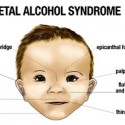Call
888-647-0579
to speak with an alcohol or drug abuse counselor.
Who Answers?
Addiction Science
It’s challenging for some to understand why addiction affects one individual and not the next. In fact, even doctors and treatment professionals are sometimes at a loss of words when it comes to explaining the science behind addiction and what it is that makes some people become addicted to drugs or alcohol while others steer clear of the problem. Scientific advances have helped doctors, treatment professionals and others to better understand the science behind addiction and continued research embarks on the consistent journey to discover more about what it is that causes addiction and addictive behaviors.
People of all ages suffer the harmful consequences of drug abuse and addiction.
The National Institute on Drug Abuse, NIDA, estimates that the total cost of addiction to drugs, alcohol, nicotine and illegal substances is upwards of half a trillion dollars each year in America alone. This includes the impact that drug abuse and addiction has on the economy, the criminal implications that arise from addiction, the medical needs that result and the overall social impact of addiction. More than half a million people die as a result of addiction related causes each year in the United States.
The Science Behind Addiction
There are a number of ways that science has helped to provide solutions for those who are addicted to drugs or alcohol. Scientists study the ways that drugs, alcohol and other substances affect the brain and how these chances impact human behavior. The information that is gained helps in making better judgment calls when it comes to addiction treatment and also when it comes to finding new methods of helping people to effectively recover.
Addiction is a chronic disease that is characterized by changes in the brain which result in a compulsive desire to use a drug. Through science, it has been determined that an individual’s risk of becoming addicted can be influenced by a number of factors including both genetics and environmental influence. Addiction science focuses on taking a closer look at how all of these factors, everything from biology to the environment to family, influence people to used drugs or alcohol and to potentially become addicted.

When Diane O’Connor adopted four children she had been fostering, she knew she had challenges ahead of her. Her previous experiences with foster children at her home in Upstate Albany had proven such kids often suffered from a variety of emotional and behavioral problems. This was understandable, given the abuse and neglect they had endured….
Continue reading ›
Imbibing too much at the punch bowl at holiday parties or at other times when alcohol is flowing freely can hurt more than your sobriety and waistline. Overindulgence with booze can cause a condition doctors call holiday heart syndrome. It can happen to anyone of any age. “Anywhere from very young to middle aged or….
Continue reading ›
A recent study in Lancet Medical Journal says men are twice as likely as women to become alcoholics. Casual drinking may lead to something more serious. A study released this month shines a light on the risks of alcohol abuse, especially among those with a “Y” chromosome. The report says men are twice more likely….
Continue reading ›
Binge drinking in the military is more common than you may think, university study finds. It may come as no surprise to anyone who’s served in the military, but 43 percent of active-duty personnel admit to frequent binge drinking, according to a new study from the University of Minnesota. On average, that means that every….
Continue reading ›
A new study conducted on rodents has shown the extreme harm caused by chronic drinking on the liver, much more than the injury caused by binge drinking. Although alcohol consumption is known to cause liver damage, still the degree of liver damage can differ according to the pattern of drinking “Different patterns of drinking can]….
Continue reading ›
Programs that give drug addicts access to clean needles have been shown the world over to slow the spread of deadly diseases including H.I.V./AIDS and hepatitis. Public health experts were relieved when President Obama announced his support for ending a ban on federal funding for such programs. Unfortunately, Mr. Obama’s message seems not to have….
Continue reading ›
The economy is cascading downward at a rate unheard of since the early thirties. Unemployment is rising at a staggering pace, and many flagship industries are closing their doors or cutting production, adding thousands more workers to the unemployment line. President Obama’s stimulus package is designed to stop the economic hemorrhaging and return the nation….
Continue reading ›
At least one in five men in developed countries are at risk of abusing or becoming dependent on alcohol during their lifetimes, U.S. researchers said on Sunday. The risk is about half that for women, who have an 8 to 10 percent chance of becoming dependent on alcohol. And despite the popular belief that nothing….
Continue reading ›
Naltrexone is cheap, effective and requires no costly rehab. So why do so few doctors endorse it? Mrs M, as she asks me to call her, isn’t sure exactly when she last drank herself into a comatose state, but she knows it was about five years ago. At that time she got through a bottle….
Continue reading ›
The vast majority of New Yorkers struggling both with mental illness and substance abuse don’t get treatment for both conditions at the same time – a barrier that can result in relapse, discontinued treatment and, in some cases, suicide. It’s a problem that’s gone on for years because of a flawed Medicaid coding system, and….
Continue reading ›
